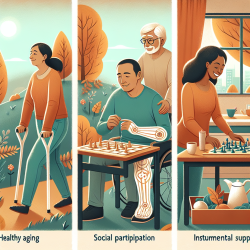Introduction
The COVID-19 pandemic has significantly altered the landscape of healthcare delivery, particularly in pediatric primary care. The research article "Changes in Primary Care Visits in the 24 Weeks After COVID-19 Stay-at-Home Orders Relative to the Comparable Time Period in 2019 in Metropolitan Chicago and Northern Illinois" provides insightful data on how primary care visits have evolved during this period. This blog aims to help practitioners enhance their skills by implementing research outcomes and encouraging further exploration in telemedicine.
Key Findings from the Research
The study analyzed pediatric primary care utilization in metropolitan Chicago over the first 24 weeks of the COVID-19 pandemic. Here are some of the critical findings:
- Total visits in 2020 were significantly lower than in 2019, with 102,942 visits compared to 144,672.
- Well-Child and Immunization-Only (WC-IO) visits initially dropped to half of 2019 levels but rebounded to over 90% within eight weeks.
- Other visit types remained below 70% of 2019 levels throughout the study period.
- The use of telemedicine peaked at 21% of all visits in mid-April 2020 but declined to less than 10% by June.
Implications for Practitioners
The research highlights several implications for practitioners aiming to improve their pediatric care services:
1. Embrace Telemedicine
The rapid adoption of telemedicine during the pandemic underscores its potential as a vital tool in healthcare delivery. Practitioners should consider integrating telemedicine into their routine practice to maintain continuity of care, especially for non-emergency consultations. Telemedicine can be particularly effective for managing mental health conditions, as indicated by the increase in telehealth visits for ADHD and anxiety.
2. Encourage Well-Child Visits
The rebound in WC-IO visits demonstrates the effectiveness of targeted efforts to encourage families to return for essential care. Practitioners can utilize digital communication tools, such as email and text reminders, to prompt families about the importance of routine check-ups and vaccinations.
3. Adapt to Changing Patterns
The decline in visits for common respiratory and ear infections suggests a shift in healthcare-seeking behavior. Practitioners should adapt their services to address emerging needs, such as mental health support and skin conditions, which have become more prevalent during the pandemic.
Future Research Directions
The study provides a foundation for further research into pediatric care delivery models. Practitioners are encouraged to explore the following areas:
- The long-term impact of telemedicine on patient outcomes and practice sustainability.
- Strategies to maintain and enhance patient engagement in a post-pandemic world.
- The role of policy changes in expanding access to telemedicine and value-based care models.
Conclusion
The COVID-19 pandemic has accelerated the adoption of telemedicine and highlighted the need for adaptable healthcare delivery models. By leveraging the insights from this research, practitioners can enhance their services and ensure that children receive the recommended care they need. To read the original research paper, please follow this Changes in Primary Care Visits in the 24 Weeks After COVID-19 Stay-at-Home Orders Relative to the Comparable Time Period in 2019 in Metropolitan Chicago and Northern Illinois.










